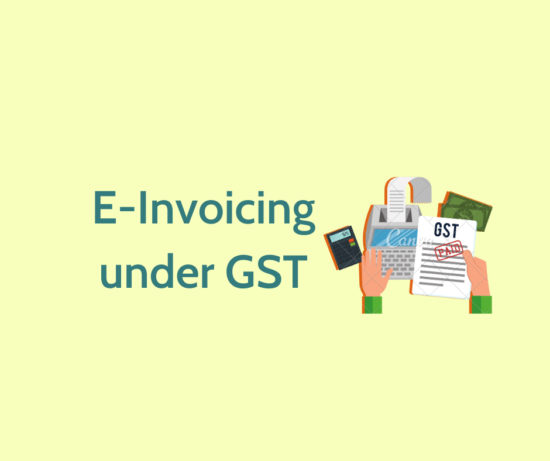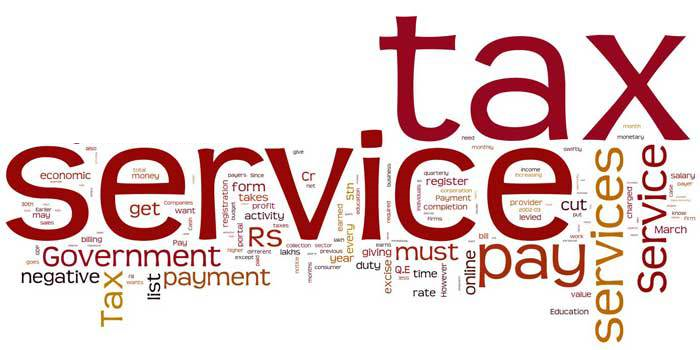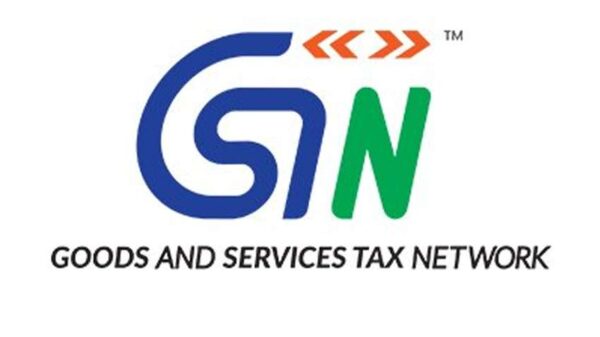India will implement electronic invoicing for business-to-business transactions from Oct. 1 under the goods and services tax regime. Registered entities with a turnover of more than Rs 500 crore under a single permanent account number are required to comply with this. Currently in testing phase, a dedicated electronic portal will go live next month for over 7,000 businesses that fulfill the turnover criteria.
Businesses currently rely on ERP software platforms to generate invoices by manually adding the prescribed information. Consolidated details of invoices against supplies during a month are filed through an electronic return–GSTR-1. Invoice matching is achieved by replicating the relevant entries from this form into the buyer’s monthly return of purchases — GSTR-2A. A buyer has to verify, confirm and then upload its electronic return.
But this system has various shortcomings.
Invoice-related information is not available to the government in real time, as the relevant returns are only filed at the end of a month. Vendors may raise invoices without any proper supply to avail fraudulent input tax credit. Similarly, different software platforms make reconciliation difficult and lack of a common platform and non-standard method causes delays in filing and processing of GST invoices.
The government intends to address these problems through the e-invoicing system.
What’s E-Invoicing?
E-invoicing was originally proposed in Budget 2019, to be implemented with effect from April this year. The turnover threshold was initially set at Rs 100 crore. The Covid-19 outbreak, however, delayed implementation, and prompted the government to revise the turnover thresholds.
The new invoicing method will be achieved through a dedicated web portal—invoice registration portal. To be clear, the portal cannot be used as a tool for generating primary invoices—companies will still have to rely on their in-house ERP solutions for this purpose.
The ERP data will then have to be transferred in a fixed format to electronic schema — forms prescribed by the GST department. This must be done before sending the goods to the purchaser. Mandatory details like supplier and receiver’s names, address, registration number, date and time of supply, invoice date, applicable rate of GST and HSN number for the goods etc. will need to be given.
E-Invoicing: How Will It Work?
Businesses can deploy various methods for uploading data to the IRP portal depending on the frequency of invoice generation.
Large businesses can seek direct integration and interchange of data between their own software and the IRP portal through application programming interface. They can also generate invoice details offline and then upload them in bulk for further processing. The other option is to enter the details manually.
The IRP portal will then authenticate these details and generate a 64-character invoice reference number along with a quick response code the vendor must print on its final invoice. The QR code incorporates the IRN and other details uploaded by the supplier.
Pointing out the benefits of the new system, Jigar Doshi, partner at Tax Technology Managed Services LLP, said implementation of e-invoicing will benefit the government and businesses equally.
He said that The integration of QR Code and IRN will allow the government to track invoices in real time, reduce processing errors and prevent bogus invoicing. It will substantially aid automation as going forward, details from the IRP will be auto populated in GSTR-1, GSTR-2A and will help in direct generation of E-way bills.
And that, experts said, will address the issue of bogus bills.
Companies can at present dupe the GST system by raising fake invoices without any underlying movement of goods. The details of such an invoice will only reach the government at the month when the returns are filed. The government cannot check the movement of goods due to lack of real-time data. Via e-invoicing, the government will get information on any movement of goods on almost real time basis, providing it an opportunity to track a company’s activities.
E-Invoicing: India Inc.’s View
Businesses have mostly welcomed the proposed introduction of electronic invoicing. However, a few companies also expressed the need for another deferral due to the impact of Covid-19 on their business operations.
A spokesperson for Amazon India said in an emailed statement that the company views the e-invoicing implementation as a positive move. It will help achieve the vision of digital invoices and paperless movement of goods and will benefit the government and industry in building a robust revenue reporting process, the spokesperson said.
Mohan Nusetti, vice president and head of indirect tax at Lupin Ltd., told BloombergQuint that the drugmaker is in an advanced stage of implementing and testing necessary technological functionalities in its ERP to ensure a seamless transition into the e-invoicing regime.
“The paucity of time since the announcement of the last form and release of related APIs put significant stress on taxpayers. While it has been clarified that only the QR code is to be printed on the invoice to begin with, there are several new data fields which need to be captured and reported at the time of generating an e-invoice” said Mohan Nusetti, head of indirect tax, Lupin Ltd.
The success of e-invoicing would largely be dependent on the functional capability and speed of the IRP portal to simultaneously generate millions of e-invoices in real time. Any snag in this end-to-end automated process may result in major business disruption for companies, he said.
E-Invoices: Non-Compliance
Companies failing to implement the new system will be considered non compliant under the GST law, which requires them to issue invoices strictly as per the prescribed requirements. Any invoice which doesn’t adhere to the prescribed format will be treated as invalid, resulting in denial of tax credit. Companies may also incur penalties applicable for non-issuance of invoices—Rs 10,000 or an amount equal to 100% of tax value, whichever is higher.
Source: Bloombergquint.com
***
[rainbow]Don’t miss the next GST Update / Article / Judicial pronouncement[/rainbow]
Subscribe to our newsletter from FREE to stay updated on GST Law
Resolve your GST queries from national level experts on GST free of cost.
TW Editorial Team comprises of team of experienced Chartered Accountants and Advocates devoted to spread the knowledge of GST amongst the various stakeholders.



